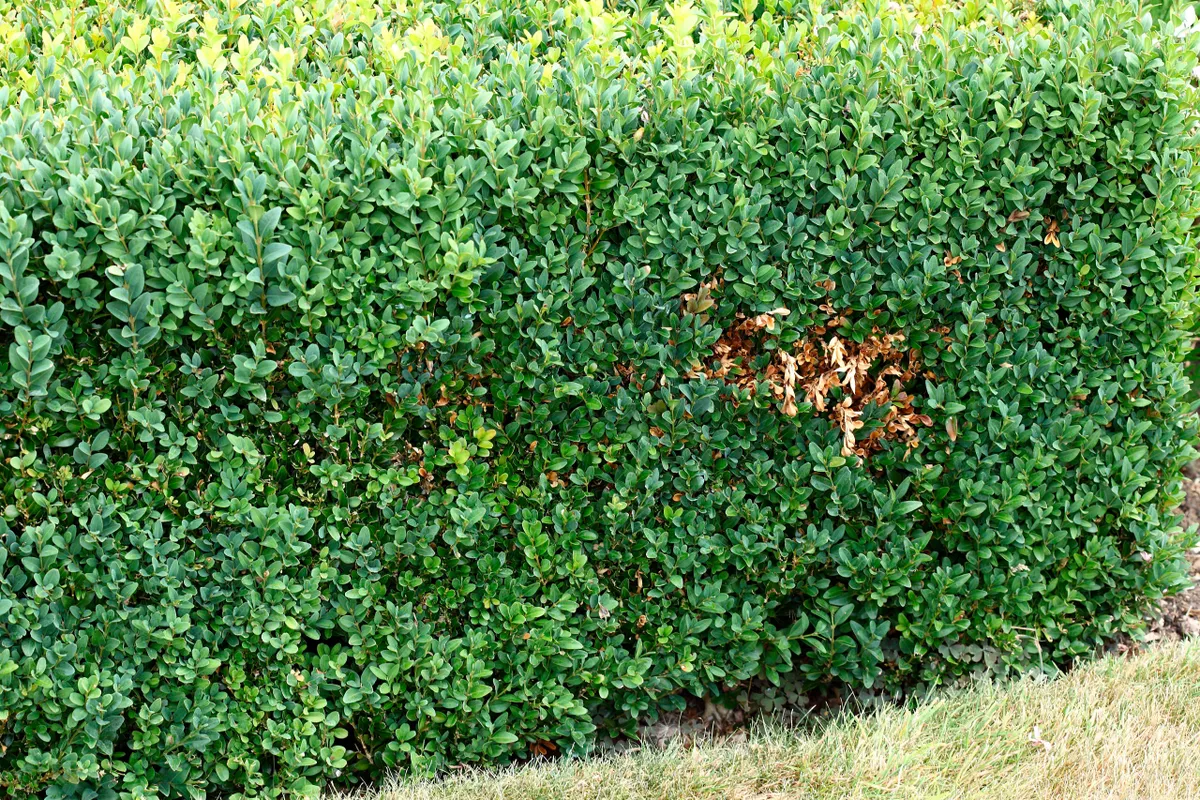Box blight is a fungal disease that has affected box (Buxus) plants in recent years. It flourishes in damp and humid conditions where good air flow is restricted. It can ruin box parterres, topiary and balls.
Box blight causes brown leaves, straw-coloured bare patches and dieback, and its symptoms can be confused with an infestation of box caterpillar.
In recent years, box blight has been particularly prevalent in old hedges, where decades of clipping at have created very dense plants. Herbaceous plants that spill over the plants in borders, restricting airflow, can also compound the issue.
Here's more on box caterpillar
Box blight: what it looks like and how to treat it
What is box blight?
Box blight is caused by two fungi, Calonectria pseudonaviculata and Calonectria henricotiae (also known as Cylindrocladium buxicola).
What does box blight look like?

Tell-tale signs of box blight are the yellowing and browning of leaves, which then fall, leaving bare patches. You may also notice black streaks and dieback on young stems and white spores on the undersides of leaves.
Box blight can be confused with the effects of box caterpillar. The effects of box caterpillar, however, are rapid and can defoliate plants in a matter of days. You will also notice webbing around the leaf tips, black droppings, yellow-green and black caterpillars within the plant.
How to treat box blight
Box blight doesn't kill box plants, but it can weaken them and make them look unsightly. It can be treated, but it takes work to keep it under control; act as soon as you see signs of infection. You may need to prioritise prized plants, as keeping blight at bay in a garden takes time and effort.
When you see signs of infection:
- Cut out the affected area, plus an area around it. Be sure to do this in dry weather – pruning in wet conditions can help spread the disease.
- You could spray fungicide before and after cutting back infected plants – although doing this on its own is not enough.
- Bin the infected prunings and fallen leaves around the plant– don't add to your compost bin, as this will risk spreading the disease further around your garden.
- Clear away fallen leaves beneath the plant, plus a generous scraping of the soil too.
- Clean your gardening clothing, shoes and pruning tools so that you don't spread the disease around the garden.
- Feed plants with a general purpose fertiliser, such as a seaweed feed.
How to prevent box blight
- Quarantine new box plants for four weeks before planting them in your garden and examine them carefully for signs of blight. Return them to the seller if they show signs of box blight.
- Box blight flourishes in damp and humid conditions where good air flow is restricted, so ensure good air flow around your plants and leave plenty of space around them.
- Prune once a year, on a dry day in summer. This will result in slightly looser plants, with less dense foliage that is less susceptible to blight.
- Avoid splashing plants when watering them.
- Don't over feed plants with fertilisers that are high in nitrogen, as this can result in vulnerable soft growth. Use a balanced fertiliser such as seaweed feed.
- You could also apply a specialist plant tonic designed for use on box plants to keep your plants healthy.
- Ensure your pruning tools are sharp – avoid using power tools or blunt tools, as these can crush or flatten leaves and make them more susceptible to infection. Disinfect tools after use.
As box is now also under threat from box caterpillar too, you might decide that it's preferable to plant a different evergreen – read about our recommended alternatives to box. Many small conifers also make good replacements.